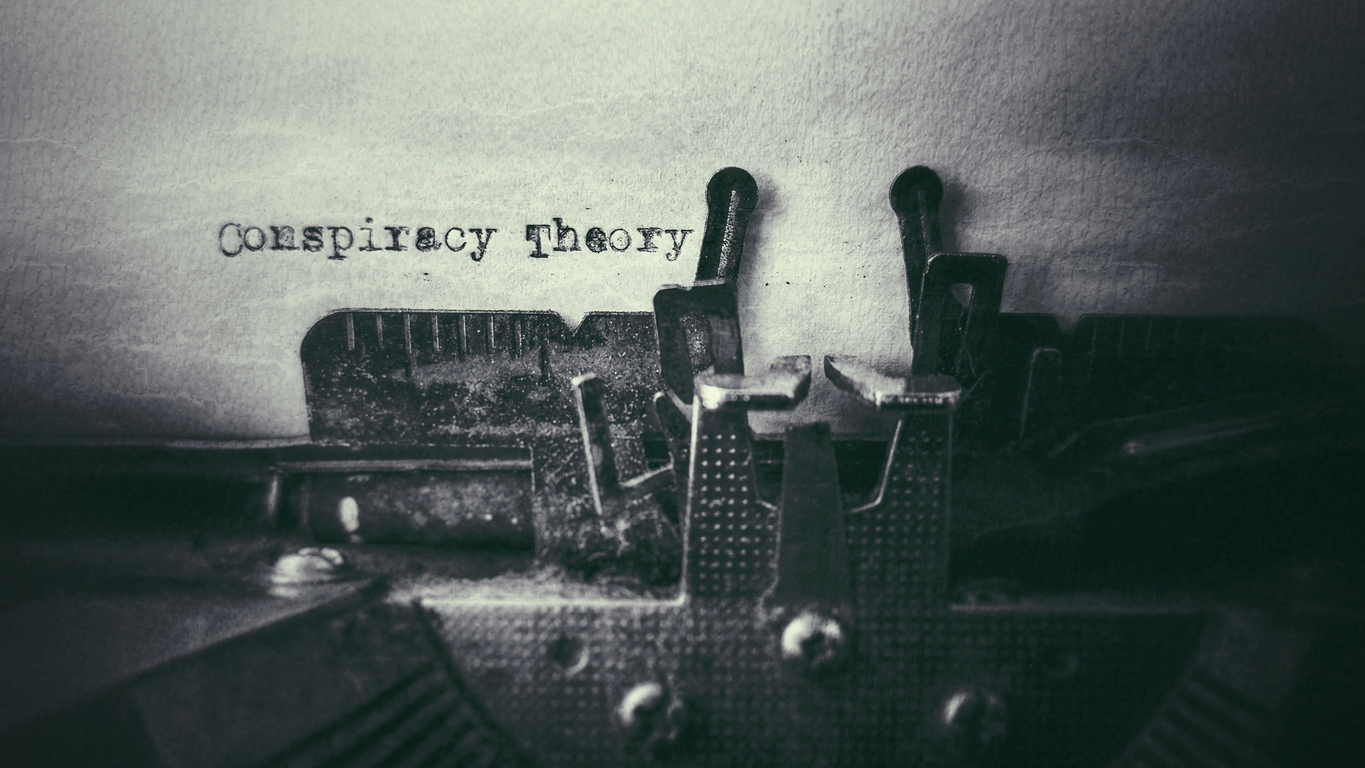
Conspiracy theories have fascinated and perplexed people for centuries. From ideas about secret government experiments to the belief that the moon landing was faked, conspiracy theories tap into deep-seated fears, distrust, and the human need to make sense of complex events. But what drives people to believe in these alternative explanations? What psychological, social, and scientific factors contribute to their appeal? In this article, we’ll explore the science behind popular conspiracy theories and the reasons why they continue to captivate the public.
1. Psychology of Belief: Why People Believe in Conspiracy Theories
At the core of many conspiracy theories is the human tendency to seek patterns and explanations for events, especially when faced with uncertainty. This psychological inclination is known as pattern recognition—the brain’s way of trying to connect the dots, even when no clear connection exists.
Key psychological factors:
- Need for control: In times of uncertainty or crisis, such as during a pandemic or political upheaval, people often turn to conspiracy theories to regain a sense of control over their environment. These theories offer seemingly straightforward explanations for complex problems, reducing ambiguity.
- Cognitive bias: Our brains are wired to make quick judgments and decisions, often based on limited information. This results in cognitive biases like confirmation bias, where people tend to seek out information that supports their pre-existing beliefs while ignoring contradicting evidence.
- Suspicion of authority: Distrust in governmental, corporate, or scientific institutions fuels many conspiracy theories. When people feel alienated or distrustful of those in power, they may turn to alternative explanations that paint these institutions as manipulative or corrupt.
Pro tip:
- Understanding these psychological tendencies can help individuals critically evaluate conspiracy theories, recognizing when they’re being swayed by emotions or biases.
2. The Role of Social Media in Spreading Conspiracy Theories
With the rise of the internet and social media platforms, conspiracy theories can spread faster and reach more people than ever before. While this has allowed for the rapid dissemination of information, it has also made it easier for misinformation to flourish.
How social media amplifies conspiracy theories:
- Echo chambers: Social media platforms often create “echo chambers,” where users are exposed primarily to content that aligns with their views. Algorithms tailor what people see based on their past behavior, reinforcing beliefs without presenting opposing perspectives.
- Virality of sensational content: Conspiracy theories often contain sensational or shocking elements, which makes them more likely to be shared and discussed. Content that evokes strong emotional reactions—fear, anger, or outrage—is more likely to go viral, fueling the spread of false information.
- Influence of online communities: Online forums and groups dedicated to specific conspiracy theories, such as flat earth believers or anti-vaccine advocates, allow like-minded individuals to share and validate their ideas. These communities can become insular, rejecting outside criticism and reinforcing their beliefs.
Pro tip:
- To combat the spread of misinformation, it’s crucial to check the credibility of sources and diversify the types of information you consume online.
3. Confirmation Bias and the Search for Evidence
Once someone believes in a conspiracy theory, confirmation bias can make it difficult for them to accept evidence that contradicts their belief. This psychological phenomenon causes individuals to favor information that supports their existing views while dismissing or downplaying opposing data.
Examples of confirmation bias in conspiracy theories:
- Flat Earth theory: Believers in the flat earth theory may ignore scientific evidence about gravity, the curvature of the Earth, or satellite images that show the planet’s spherical shape. Instead, they focus on perceived inconsistencies in scientific explanations or use isolated incidents (like horizon visibility) to justify their beliefs.
- Moon landing hoax: People who believe the moon landing was faked often cite grainy footage, perceived oddities in photos, or conspiracy-laden documentaries while ignoring mountains of credible evidence from NASA and independent sources. Confirmation bias leads them to interpret this selective information as proof of a cover-up.
Pro tip:
- Being aware of confirmation bias is the first step toward overcoming it. Actively seek out credible, contradictory information to challenge your assumptions and beliefs.
4. The Power of Groupthink and Social Influence
Groupthink, the phenomenon where the desire for harmony or conformity within a group results in irrational decision-making, plays a major role in the persistence of conspiracy theories. When individuals are surrounded by others who share the same belief, they are less likely to question it, even if it lacks evidence.
How groupthink influences belief in conspiracy theories:
- Social validation: People often look to their peers for validation of their beliefs. When surrounded by others who agree, it creates a sense of security and confidence in the theory, regardless of its plausibility.
- Fear of social exclusion: Once part of a conspiracy-focused group or community, individuals may fear being ostracized if they begin to doubt the theory. This pressure to conform can prevent critical thinking and self-reflection.
- In-group vs. out-group dynamics: Many conspiracy theorists see themselves as part of an “in-group” that knows the hidden truth, while everyone else (the “out-group”) is seen as misled or part of the conspiracy. This reinforces a sense of superiority and strengthens group cohesion.
Pro tip:
- Challenge groupthink by engaging in discussions with individuals who hold different views. Diverse perspectives can help prevent the development of echo chambers and encourage critical thinking.
5. Popular Conspiracy Theories and Their Psychological Appeal
Several conspiracy theories have stood the test of time, continuing to attract believers despite being debunked by experts. Understanding their psychological appeal helps explain why people cling to them even in the face of evidence.
Examples of popular conspiracy theories:
- JFK Assassination: The assassination of President John F. Kennedy has spawned numerous conspiracy theories over the years, with many people believing that the official explanation (that Lee Harvey Oswald acted alone) is a cover-up. The public’s disbelief may stem from the fact that such a significant event seems too monumental to be the result of a lone gunman.
- 9/11 Conspiracy Theories: After the terrorist attacks of September 11, 2001, several conspiracy theories emerged, claiming that the U.S. government was complicit in or responsible for the attacks. These theories often arise when official explanations feel unsatisfactory or when the public struggles to cope with the enormity of the event.
- Chemtrails: Some conspiracy theorists believe that the condensation trails (contrails) left by airplanes contain chemicals meant to control the population or manipulate the weather. The persistence of this belief reflects a general distrust of governmental authority and a misunderstanding of basic atmospheric science.
Pro tip:
- When confronted with conspiracy theories, try to focus on the psychological needs they fulfill—such as the need for certainty, control, or an explanation—rather than immediately dismissing them as illogical.
6. Debunking Myths: The Role of Science and Education
While conspiracy theories can be persistent, science and education are powerful tools for debunking myths and promoting critical thinking. Science literacy—understanding the scientific method, how evidence is gathered, and how experts form conclusions—is key to countering the allure of conspiracy theories.
How science helps debunk conspiracy theories:
- Scientific method: The scientific process relies on gathering evidence, testing hypotheses, and peer review, which contrasts with the anecdotal, cherry-picked evidence often presented by conspiracy theorists.
- Educational outreach: Teaching critical thinking skills in schools and promoting media literacy helps individuals distinguish between credible sources and misinformation. Understanding how to evaluate evidence reduces susceptibility to conspiracy theories.
- Debunking with empathy: Rather than dismissing conspiracy believers outright, approaching them with empathy and providing clear, evidence-based information can be more effective in changing minds.
Pro tip:
- Encourage curiosity and critical thinking by asking questions like, “What evidence supports this claim?” or “Are there alternative explanations that make more sense?”
The persistence of conspiracy theories can be explained by a combination of psychological factors, social dynamics, and the way information spreads in the digital age. While conspiracy theories will likely always be part of human culture, understanding the science behind why people believe in them can help us foster more critical thinking and healthy skepticism. By addressing cognitive biases, embracing science education, and promoting open dialogue, we can counter the influence of misinformation and encourage a more fact-based worldview.







